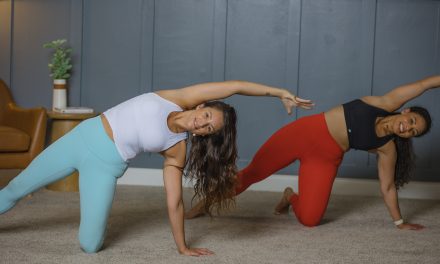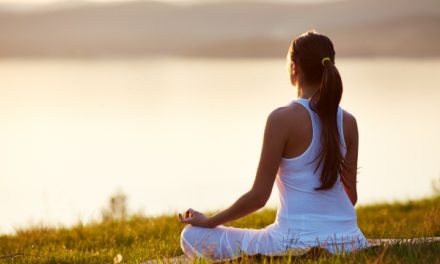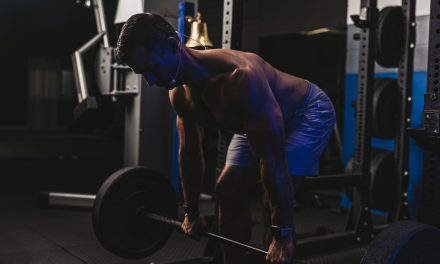In today’s world, sitting for extended hours (and developing tight hip flexors) has become the norm.
Whether you’re an active person or not, excessive sitting can take a toll on your hip flexor muscles.
These powerful muscles, particularly the elusive psoas muscle, can become tight and dysfunctional, causing various problems, even for those who exercise regularly.
But don’t worry; we’re here to help you address this issue.
Here are two unique exercises for tight hip flexor muscles that you can start doing today!
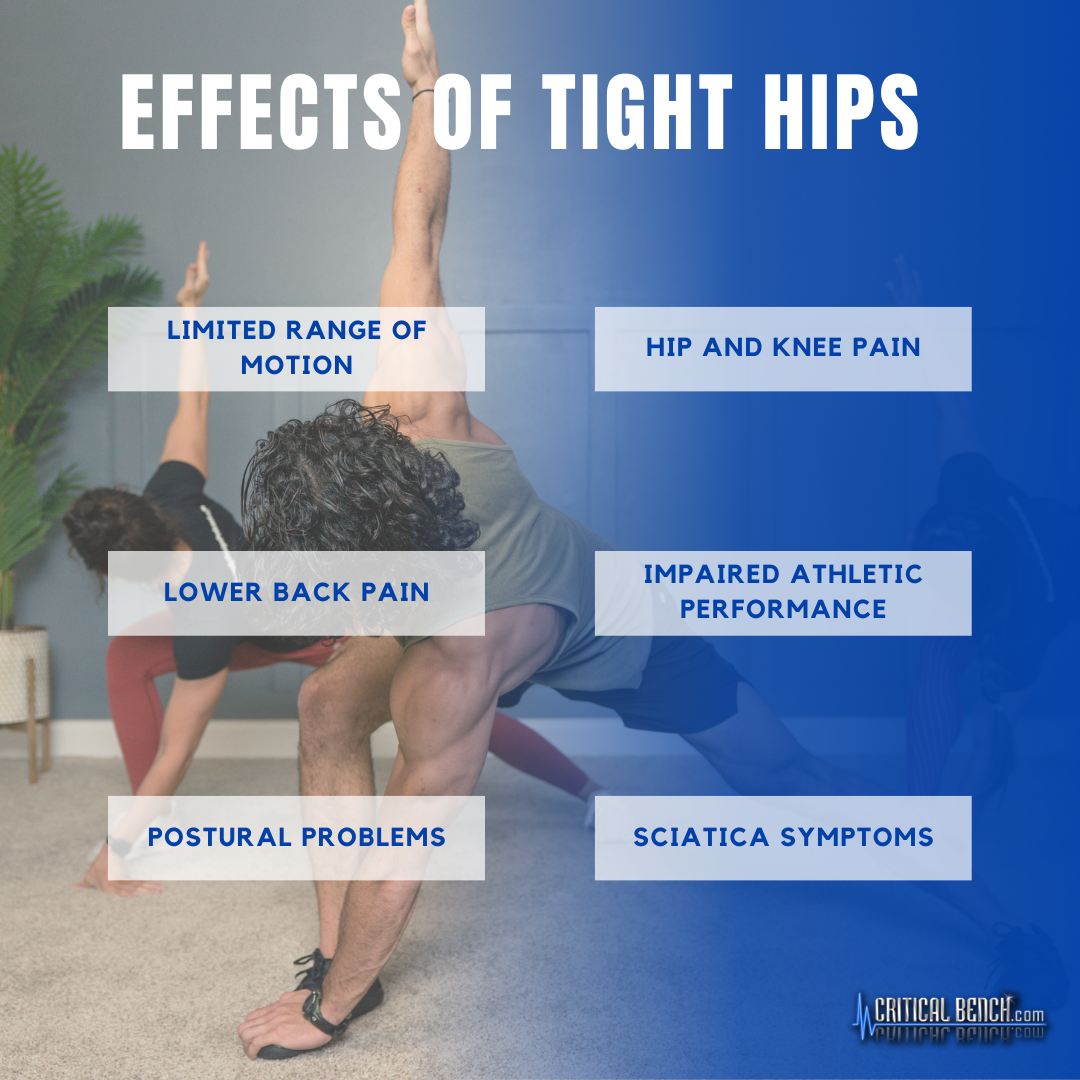
What Causes Tight Hip Flexors?
Tight hip flexors can result from a variety of factors, each contributing to increased tension and decreased mobility in this crucial muscle group.
The primary cause is prolonged sitting, which is common in today’s desk-bound lifestyle. When you sit for extended periods, the hip flexors remain in a shortened position, leading to tightness over time.
Your Workout
Another significant cause is an imbalance in your workout routine.
Individuals who focus heavily on exercises that engage the hip flexors, such as running or cycling, without adequately stretching or incorporating hip extension movements, can also experience tightness.
This imbalance can lead to overuse of the hip flexors, further exacerbating the issue.
Core Strength and Posture
In addition to lifestyle and exercise habits, poor posture and lack of core strength contribute to tight hip flexors.
A weak core fails to support and stabilize the pelvis, placing additional strain on the hip flexors to compensate for the lack of support.
Injury and Trauma
Lastly, injury or trauma to the hip or lower back area can lead to protective muscle tightening or spasms in the hip flexors as a response to pain or to stabilize the area.
This protective mechanism can result in chronic tightness if not properly addressed through rehabilitation and exercise.
Understanding these causes is the first step towards addressing tight hip flexors.
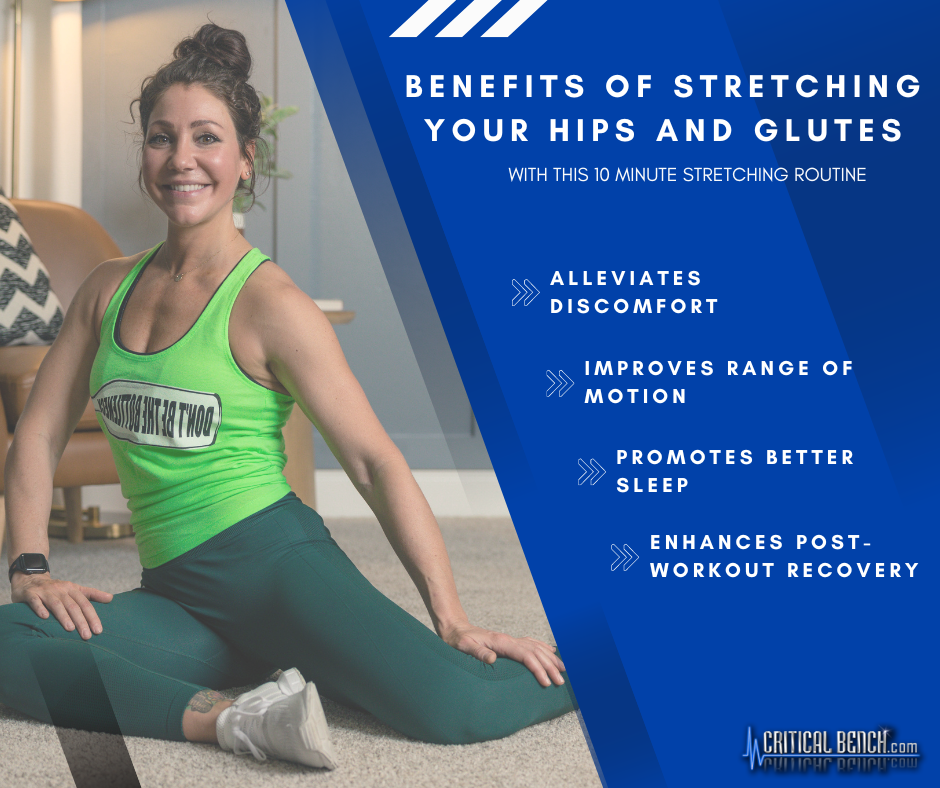
Benefits of Healthy Hip Flexors
So, why should you care about your hip flexors?
These muscles are crucial for maintaining good posture, digestion, circulation, energy levels, and overall well-being.
Neglecting them can lead to various chronic issues. They are, in essence, your body’s connection between the upper and lower halves, and they deserve your attention.
Maintaining healthy hip flexors is vital for several reasons, impacting not just your physical health but also your overall quality of life.
Here are some of the key benefits of ensuring your hip flexors are flexible, strong, and healthy:
Improved Posture and Alignment
Healthy hip flexors contribute to better posture by enabling the pelvis to maintain its natural alignment.
This reduces strain on the lower back, decreases the risk of back pain, and enhances your standing and sitting posture, contributing to a more confident and healthy appearance.
Enhanced Mobility and Flexibility
Flexible hip flexors are crucial for a full range of motion in the hips, which is essential for performing everyday activities such as walking, bending, and squatting with ease.
This increased mobility also contributes to better performance in sports and exercise, allowing for more dynamic movements and reducing the risk of injuries.
Improved Digestion and Circulation
The act of moving your hips and engaging the hip flexors can help stimulate the abdominal organs, promoting better digestion and aiding in smoother bowel movements.
Additionally, increased circulation in the hip area can help reduce swelling and promote the delivery of oxygen and nutrients to the muscles, aiding in recovery and overall health.
Increased Energy Levels and Well-being
Regularly stretching and strengthening the hip flexors can lead to improved energy levels.
Tight, restricted muscles can lead to a feeling of lethargy and sluggishness, while open, flexible muscles allow for more efficient movement, leaving you feeling energized and ready to tackle your day.
Prevention of Chronic Pain and Injuries
Tight hip flexors can contribute to a range of issues, including lower back pain, knee injuries, and even foot and ankle problems.
By maintaining the health of your hip flexors, you can prevent these potential issues, ensuring a better quality of life free from chronic pain and mobility restrictions.
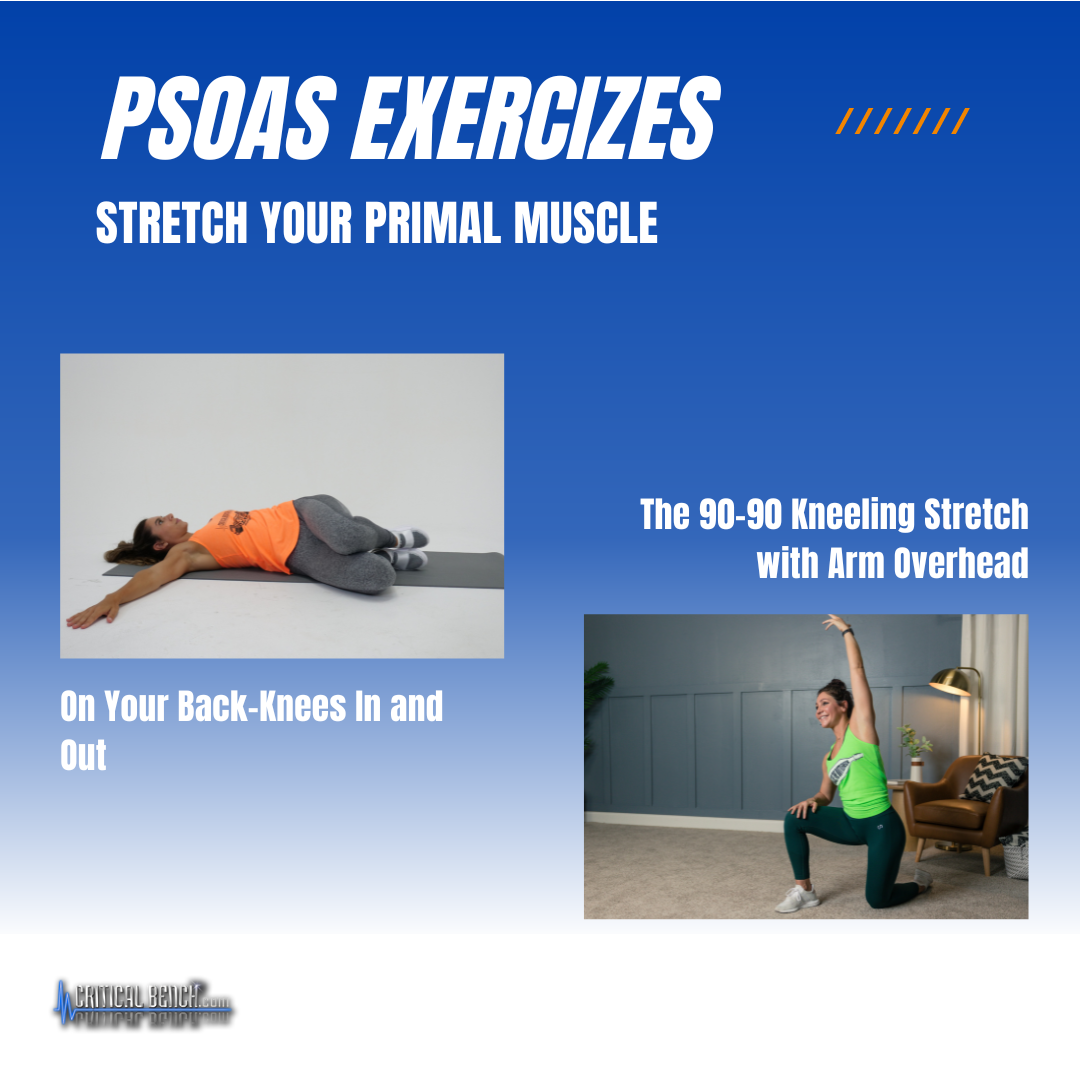
Exercises for Tight Hip Flexors
By incorporating specific exercises that target this area, you can improve flexibility, reduce discomfort, and enhance your overall mobility.
Let’s dive into the exercises that can help open up your hip flexors.
Exercise 1: The 90-90 Kneeling Stretch with Arm Overhead
The first exercise we’ll explore is the 90-90 kneeling stretch.
It’s all about opening up the central part of your body, targeting the hip flexors and that elusive psoas muscle.
Begin by positioning one knee at a 90-degree angle and the other knee, too, forming a 90-degree angle. Your front knee should align with your hip, while your back knee lines up with your other hip. This setup helps you emphasize the deep hip muscles.
Now, elevate one arm straight above your head while keeping your posture straight. Hold this position for about 20 seconds per side. You’ll notice a slight shift in your pelvis as you do this. This exercise effectively lengthens the hip flexor, providing relief from tightness and discomfort.
Exercise 2: On Your Back – Knees In and Out
Our second exercise focuses on creating hip movement that you might not typically experience in your daily routine. It’s called the “Knees In and Out” exercise.
Lie on your back with your knees bent at a 90-degree angle, feet flat on the ground. Then, simply move your knees from side to side, holding each side for two seconds before switching to the other.
Repeat this for a total of 10 repetitions.
This exercise encourages rotation and opens up your hips in ways they’re not accustomed to, making it an excellent complement to the 90-90 stretch.
The Power of Unlocking Your Hip Flexors
The “Unlock Your Hip Flexors” program, which includes these and other exercises, can benefit people of all ages and backgrounds.
By focusing on this essential muscle group, you can significantly improve your quality of life.
Your hip flexors play a more significant role in your health and mobility than you might think.
Incorporating these exercises into your routine can help you combat hip pain, enhance your posture, and lead to an overall healthier lifestyle.
For more details and to follow along with the full program, check out our Unlock Your Hips program.

